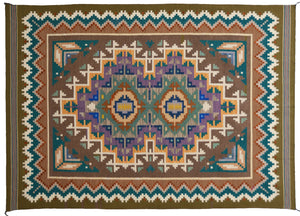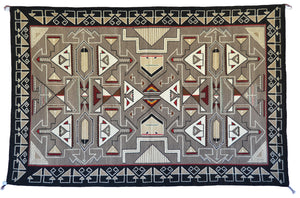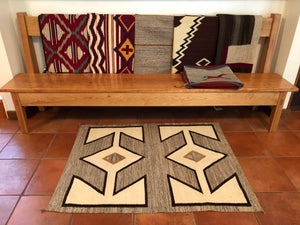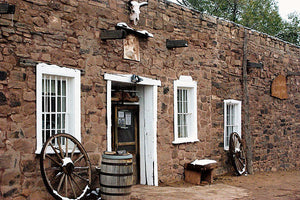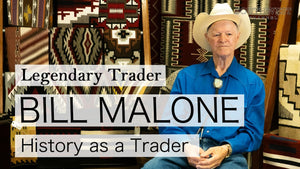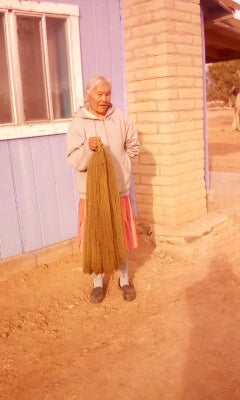Churro Sheep : Back from the Brink!

For hundreds of years Churro sheep have been the center of Navajo life, yet the animal was nearly exterminated by outside forces.
Steve started working with Navajo weavers in the early 1970s and in the 1980s. He was very interested in improving the Navajo weaving quality by distributing better wools to some of his better weavers. During this time it was New Zealand Romney and Lincoln wools he would distribute to some of the better weavers in the Wide Ruins and surrounding areas. Many of these works were featured in his book The Fine Art of Navajo Weaving.
In the 1990s the economy was not very good and the natural dyes of the Wide Ruin weavers were copied commercially so the uniqueness of their weavings was compromised in value. At this time, Navajo weavings were missing something. Steve met with an old friend, Ray Dewey, in Santa Fe and they discussed how the quality of Navajo weavings could be improved at this point in time. The answer was the wool and the dyes.
The best weaving wool for the Navajo rugs and blankets is the Churro sheep wool. The historic pieces that have been present since over 100 years ago are clear evidence that the Churro wool is the best and only becomes better with time. This conclusion planted the seed to bring Navajo churro wool back to the loom. There were existing efforts to revive the Churro sheep since it was on the endangered species list, but nothing to improve genetics enough to have a high quality weaving wool. Navajo churro wool was the first weaving wool of the Navajo Nation because of its low lanolin content, long staple and translucent qualities. Bringing the churro sheep back to the Navajo weaver and the wool back to the loom was an important goal for Steve and Gail.
Steve was able to find the source of the Navajo Churro Registry where the genetics were being perfected for a better fleece. The next step was to find dye artists who were willing to dye the wool by hand for what would later be called the 'Navajo Churro Collection'. Though it seems like a simple thing, this took several years to put together. Moving forward with the process, the next step was reaching out to the best weavers on the Navajo reservation who were willing to use the Churro wool. The weavers were thrilled to use the wool, loved the new colors (Indigo, Cochineal and the highest quality dyes from Switzerland). With that, the Navajo Churro Collection was born.

The result of this project is history making in itself. For one thing the Navajo Churro Sheep are no longer on the endangered species list. Some of the very best master weavers of the Navajo nation are able to work on projects in the Navajo Churro Collection that they otherwise would not be able to do. They are given the very best wool which is hand dyed and custom spun ready for them to weave on their loom; the Nizhoni Ranch Gallery supports them through the weaving process even if it takes years for them to complete. A registry is kept of each weaving documenting the weaver, a photo of her, and the weaving. It is very important that in 100 years from now, the weavers will be recognized for their work.
The Navajo Churro Collection Weaving project is playing a part in preserving the Navajo weaving art in the Navajo culture. The Navajo Churro Collection celebrates the Navajo weavers and the art of the loom. The Nizhoni Ranch Gallery exclusively offers these weavings to the world, which represent some of the finest Navajo weavings ever made. Steve and Gail will continue their work and hope that one of the benefits of this project will be for young Navajos to take up this very difficult and beautiful art form, as it is a legacy well worth preserving.
- Beth Barth

